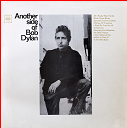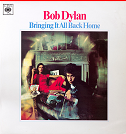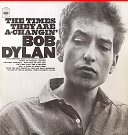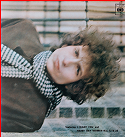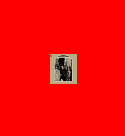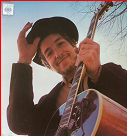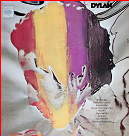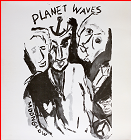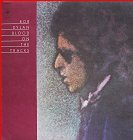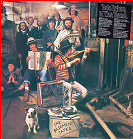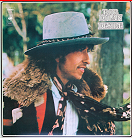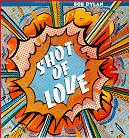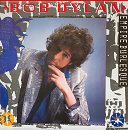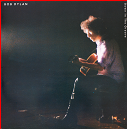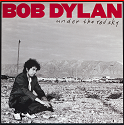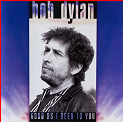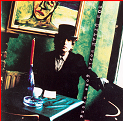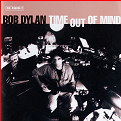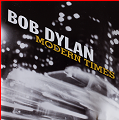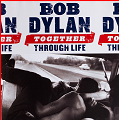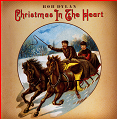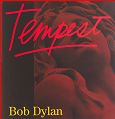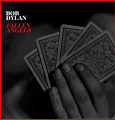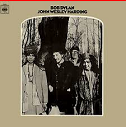HIGHWAY 61 REVISITED 1965
THE FREEWHEELIN' BOB DYLAN 1963
THE TIMES THEY ARE A-CHANGIN' 1964
ANOTHER SIDE OF BOB DYLAN 1964
BRINGING IT ALL BACK HOME 1965
GOOD AS I BEEN TO YOU 1992
TOGETHER THROUGH LIFE 2009
CHRISTMAS IN THE HEART 2009
Not only the greatest but all Dylan records
PAT GARRETT & BILLY THE KID 1973
Dylan was 20 years old when his debut album was released. It contains two original compositions, "Talkin' New York" and "Song to Woody". The rest is folk and blues standards. Produced by the legendary John H. Hammond.
This album represents Dylan's beginning as a songwriter. Eleven out of thirteen songs are original compositions. The opening track is "Blowin' in the Wind", which became the anthem of the 1960s. Other songs here, regarded as amongst Dylan's best are, "Girl from the North Country" and "A Hard Rain's A-Gonna Fall".
This is Dylan's first collection to feature only original compositions. The songs are mostly ballads, sparsley arranged, that concerns issues such as racism, poverty and social change. The title track is one of his most famous songs, and it became an anthem for peace rallies in the 60's and very much still is.
On this album Dylan still performs on his own, with only guitar, harmonica and piano on one track. His social comments are not as clear here as on the two previous albums. His most famous song from this session, "My Back Pages" will give you some explanation.
The original LP is divided into one electric and one acoustic side. On side one Dylan is backed by a rock band which made lots of folk purists turn his back on him. Here he is further distanced from protest songs, but not completetly, e.g. "Maggie's Farm". You will also find "Mr. Tambourine Man" here.
Here is the album where Dylan goes fully electric, using a rock and roll band, featuring guitarist Michael Bloomfield, on all tracks. The opening song is the epic, over 6 minutes long, "Like a Rolling Stone". The track has been described as revolutionary in its combination of different musical elements and the youthful, cynical sound of Dylan's voice
This was one of the first double LP's ever, to be released. It completed Dylan's trilogy of rock albums. Many critics regard this as one of the greatest albums of all time. It spawned the hit singles "Rainy Day Women #12 & 35" and "I Want You". Also on this album are "Just Like a Woman" and "Sad Eyed Lady of the Lowlands",
This album marked Dylan's return to acoustic music and traditional roots, after three albums of electric rock music. It is not a return to his folk roots though, it is more directed towards country music. Most famous song is "All Along the Watchtower", later covered by Jimi Hendrix.
This is a complete immersion into country music. here are more basic lyrical themes, simple songwriting structures, and a charming domestic feel. Also a new singing voice, a soft, affected country croon. Here you find "Lay Lady Lay" and "Girl from the North Country" as a duet with Johnny Cash.
This is his second album released as a double LP. A bit controversial at the time, it features mostly cover versions of well-known pop and folk songs. Included are a handful of instrumentals and original compositions. Most of it in a country music style. The album received extremely poor reviews upon release. Greil Marcus called it "shit!"
This was released just 4 months after the controversial previous album and received a much more warmer reception. The music is still hevaily country influenced. The most famous song here is "If Not for You", which was later covered by George Harrison.
This is the soundtrack to the film of the same name. The film was directed by Sam Peckinpah and Dylan himself appeared in the film as the character "Alias". It consists primarily of instrumental music, but includes the well known "Knockin' On Heaven's Door".
This album was compiled and issued with no input from Dylan himself, using outtakes from previous recordings. It followed Dylan's departure from Columbia Records. It receved very poor reviews upon release. It contains a cover of Peter LaFarge's "The Ballad of Ira Hayes"
Here Dylan is supported by The Band. The music is sort of laid back roots rock. The album got good, although not enthusiastic reviews. Here are two versions of "Forever Young", one acoustic and one backed by The Band.
This is Dylan's return to Columbia Records after a stint with Asylum Records. Most of the lyrics on the album revolve around heartache, anger, and loneliness. In the years following its release it has come to be regarded as one of his best albums. It set a standard for the singer/songwriter albums.
An album by Bob Dylan & The Band. Eight of the songs are solely by The Band. Dylan's vocals on the other 16 tracks were recorded eight years earlier, in and around Woodstock, where Dylan & The Band lived at the time. These songs were heavily bootlegged years before this release.
Most of this album was co-written by Jacques Levy, and is composed of lengthy story-telling songs. One is the opening track "Hurricane", about the murder case against boxer Rubin Carter. Featured here are Emmylou Harris on backing vocals and violin player Scarlet Rivera and most of the cast from the Rolling Thunder Review.
For the first time Dylan used a large orchestra, complete with female backing vocalists. The songs are subtly religious and somewhat apocalyptic overtones can be found throughout, e.g. on "Changing of the Guards". This can be seen as the beginning of Dylan's gospel influenced period.
Dylan's first record since becoming a born-again christian. The songs either express his strong personal faith, or the importance of christian teachings and philosophy. The record alienated many of Dylan's existing fans, but many Christians were drawn into his fan base. The song "Gotta Serve Somebody" became a hit.
The second album of Dylan's christian trilogy. It expanded on themes explored on his previous album, with gospel arrangements and lyrics extolling the importance of a strong personal faith.
The third album in the christian trilogy. But the music here is more rooted in rock than in gospel, including love songs and an ode to comedian Lenny Bruce. The stand-out track though, is "Every Grain of Sand", one of the best Dylan songs ever.
Produced by Dylan and Mark Knopfler, who also played on most of the tracks. This is Dylan's return to secular music. The reviews were the strongest in years, they almost universally hailed for his songwriting and performance. The opening track "Jokerman" is a master piece.
Another of Dylan's more controversial albums. Having pioneered the styles in the 1960s and 1970s, here he used a production with a distinct "80s style", that leaned heavily on synthesizers. Although the album was considered consistent, with a good set of songs, such as "Tight Connection to My Heart (Has Anybody Seen My Love?),"
This album was received poorly upon release, and is still considered by some critics to be one of Dylan's least-engaging efforts. However, the 11-minute epic "Brownsville Girl" (co-written by Sam Shepard) has been cited as one among his best songs.
This was Dylan's second consecutive album to receive almost unanimous negative reviews. The record contains several cover versions and the most famous original track is "Silvio".
Produced by Daniel Lanois, this was hailed by critics as a triumph for Dylan, after a string of weaker-reviewed albums. His songs here were the best he had written in a long time and seemed to connect with his past. It is considered as Dylan's best album in the 80s.
A disappointing follow-up to the previous critically acclaimed album. It has a slick, lightweight sound and some tracks that seem rooted in children's nursery rhymes. It is dedicated to "Gabby Goo Goo", later explained to be a nickname for Dylan's daughter.
An album composed entirely of traditional folk songs and covers. This is a good traditional folk album, with a mixture of known and unknown tunes, very well delivered. Dylan's first entirely solo, acoustic album since 1964.
Dylan's second consecutive collection of only traditional folk songs, performed acoustically with guitar and harmonica. The songs tend to deal with darker and more tragic themes than the previous outing, The terrific choice of songs, makes this one of his best, strongest albums of the second half of his career.
For the first time in seven years, Dylan released a record with original material, containing bitter and resigned songs. Daniel Lanois was producing again and this is hailed as one of Dylan's best records. Includes "Not Dark Yet" and the 16-minute "Highlands"
Another of his very best albums, recevied with even more enthusiam than the previous one. He had not sounded as natural and vital in years. You can hear everything from blues, rock and rockabilly to swing and jazz here. Contains among others "Po Boy" and "Mississippi".
This became Dylans first #1 record since Desire. All original material here, many of the songs are based and old blues classics, which led to some critisism. This is the third part of what is called of Dylan's renaissance trilogy. There is a raw live feeling about this record.
The album comprises a collection of hymns, carols, and popular Christmas songs. Dylan doesn't really reinterpret these songs as much as just simply play them. Proceeds from the album were donated to various charities around the world.
Most songs here are written together with Robert Hunter (Grateful Dead's lyricist). There is a spontaneous and live feeling about this record. A much lighter affair than its predecessor. Davis Hidalgo from Los Lobos plays accordion here.
Released 50 years after his debut album. The music is a ramble through American musical styles, such as, blues, country, folk, rockabilly and swing. Like "Early Roman Kings", a basic rewrite of Muddy Waters' "Mannish Boy". And the nearly 14-minute, 45-verse title cut, that retells the story of the Titanic with references to history.
SHADOWS IN THE NIGHT 2015
Only cover material here, the record consists of ten songs that were recorded by Frank Sinatra in the late 50's and early 60's. All songs recorded live in studio with Dylan's touring band with horns added on some tracks. Receiving mainly positive reviews, the album got to the top of the UK Albums Chart, making Dylan, at 73, the oldest artist to chart at #1.
A record not too different from its predecessor, probably recorded at the same session. Every song on the album, except one "Skylark", was once recorded by Frank Sinatra. This album has a slight lighter tone though and many of the songs are not too unfamiliar, most of them classics from the American Songbook.
Another set of covers. A 3-CD album with 30 songs, all by old American songwriters. Here you find classics like "As Time Goes By," "Sentimental Journey," "These Foolish Things," and "Stardust." Dylan had never before released this amount of new recorded material. Mostly positive reviews on this, calling Dylan one of the most distinctive interpreters of the Great American Songbook.
ROUGH AND ROWDY WAYS 2020
A two disc record with his first original material since Tempest 2012. The 2nd disc has only one track, the previouslu released, 16 min Murder Most Foul. A huge critical success, many claimed that Dylan at nearly 80, had done his best album in "many years, maybe decades" for the breadth of its cultural references and the depth of his lyrics and songwriting.



